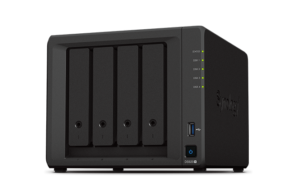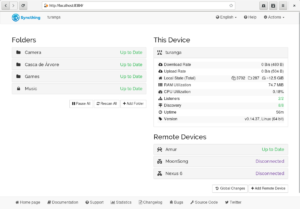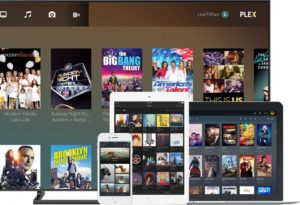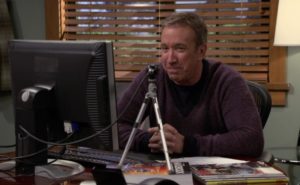One of the responsibilities of the Technical Coordinator in the Ohio Section is to submit something for the Section Journal. The Section Journal covers Amateur Radio related things happening in and around the ARRL Ohio Section. It is published by the Section Manager Tom – WB8LCD and articles are submitted by cabinet members.
Once my article is published in the Journal, I will also make it available on my site with a link to the published edition.
You can receive the Journal and other Ohio Section news by joining the mailing list Tom has setup. You do not need to be a member of the ARRL, Ohio Section, or even a ham to join the mailing list. Please sign up!
If you are an ARRL member and reside in the Ohio Section, update your mailing preferences to receive Ohio Section news in your inbox. Those residing outside the section will need to use the mailing list link above.
Updating your ARRL profile will deliver news from the section where you reside (if the leadership chooses to use this method).
Go to www.arrl.org and logon.
Click Edit your Profile.
You will be taken to the Edit Your Profile page. On the first tab Edit Info, verify your Email address is correct.
Click the Edit Email Subscriptions tab.
Check the News and information from your Division Director and Section Manager box.
Click Save.
Now without further ado…
Read the full edition at:
THE TECHNICAL COORDINATOR
Jeff Kopcak – TC
k8jtk@arrl.net
I don’t know about anyone else, since most of us have been told to cower-in-place, my productivity has gone through the roof! Must be that 10-foot commute between the work desk and home desk, might get the sun in my eyes on my way over. Finally tacking items on the perpetual “when I have loads of free time” list.
First cleaned out my data hard drive that had become a general dumping ground for downloads, pictures, data files, abandoned projects, and all other forms of miscellaneous files. Kept telling myself ‘I’ll organize this later.’ I figure accumulation started around the time I graduated with my undergrad (2008) and really got involved with ham radio. Go figure. Downloads had grown to 2,900 files at 16 GB and the general dumping ground was around 73,000 files at 314 GB. Much of that got deleted but enough was kept for reference or sentimental reasons.

After sorting, mutilating, and “organizing,” this led into another task to better utilize my NAS, or Network Attached Storage, functionality more than I currently was. NAS devices are a way to attach storage, like hard drives or SSDs, to the network for sharing data across devices on a local network or, in special cases, users on the Internet. NAS devices can be anything from a Raspberry Pi with USB hard drives attached, an old computer filled with spare hard drives running FreeNAS, to specifically designed devices from companies such as Synology, QNAP, or Asus. Many think “storage” when they think NAS because storage: it’s in the name. Consumer NAS devices offer packages that can be installed to add additional functionality commonly available through always-on devices. Functionality options such as a mail server, web server, git server, database server, docker virtualization, replication (mirroring, backup with another provider), network level authentication, VPN, IP camera DVR, chat, and document collaboration. I’m a loooong time Western Digital user. Their Red line of NAS drives are my choice, though they tried to pull some crap of quietly introducing sub-par drives (don’t use WD Red drives with “EFAX” in the model). Seagate is stepping up their game too with the IronWolf line, which is gaining popularity.
My strategy is to move files I’m not actively using on a regular basis to the NAS. These types of files would be: digital pictures, Office documents, document scans, emails, news articles, previous taxes, internet downloads, audio/video clips, newsletters, ham projects, school work and projects, old programs that aren’t updated but are still useful. Unbeknownst to me when I started, this didn’t leave a whole lot left over on my desktop data drive. Maybe in the future, I’ll move all data to the NAS.
For the remaining data left on my data drive, I still wanted to maintain a backup strategy in case something happened to those files. Anything from my own stupidity (accidental deletion, encrypted by a malware strain) to hardware failure. Previously, I used a cloud provider for remote backup but they decided to exit the consumer market. With their change in business strategy, I was using my own scripts to keep things synced from the desktop to the NAS, whenever I remembered to run them. Not great because if I deleted something with a bunch of recent changes and the last backup I had was a week or two ago, that sucks. This syncing strategy also didn’t have file versioning.
When a file is changed, the backup system preserves a new copy of the file but keeps previous versions in case you wanted to go back in time to an earlier version. Real-world example: a computer becomes infected with a malware strain that encrypts all pictures and documents. A backup solution will still make a backup copy of the newly encrypted file, because it doesn’t know its user or user on the network did something stupid. Saving previous versions means you can recover the unencrypted version without paying Mr. Bad Guy’s ransom.

I tried solutions like rsnapshot but had serious issues getting systemd timers (supposed to replace cron, yeah, we’ll see) to work with persistence and waiting until the NAS was mounted before taking a snapshot. That was abandoned after a few months. I heard about Syncthing on a podcast. It met my requirements and more! It’s quite an amazing piece of free and open-source technology. I could run an instance on my NAS (or any computer), attach devices, those devices send file changes in real time, and the software takes care of preserving previous versions. “More” came in the form of Syncthing being available on every platform I use. Supported are: source code for manual compiling, Linux (many distributions and processor architectures), Windows, macOS, *BSD, and Solaris. There is an Android client allowing me to backup my phone to my NAS. Syncthing is exactly what I needed since I have some Windows machines (like the shack PC).
A couple warnings about Syncthing. Getting started will seem overwhelming with options and what they mean. Look at good tutorials and in the forums where there are lot of users willing to help. Even more important: Syncthing IS NOT a backup tool. Wait, you said you are using it as a backup tool! I’m syncing file changes to my NAS. Backup comes in the form of making images of the NAS drive and storing those off-site. Also acceptable is using a cloud backup service to backup the NAS off-site. Both are acceptable uses of Syncthing as a “backup” solution.
Another thing on the “to do when I have tons of free time” was digitize VHS tapes. In December & beginning of January, I was on a mission to digitize my high school and college video tapes as well as family home videos. Close to 100 tapes in total. Those that are not familiar with my broadcast television past, I was involved with WHBS-TV in high school, a local cable access station. Schools from across the county came to visit us because we were doing 7 camera shoots with replay for all football games, 5 camera shoots for basketball, and competing in college level categories for regional Emmy awards. Worked at WBGU-TV in college. Did a ton of cool stuff including weekly productions for Fox Sports Ohio, a program that was distributed internationally, and lots of remote shoots in different parts of the state, to name a few. This was all before over-the-air digital was a thing. I recorded a lot of stuff on VHS tapes over those years and, of course, wanted to preserve them.
Most say “put it on DVD.” Like it or not, we’re being pushed to a streaming society so companies can control when and how you view content. Not only is physical media dead, but you now have to take care of, and store, a bunch of DVDs. There are services allowing you to roll-your-own streaming service, where you to make your own content library. There would be a server on your network containing your music, videos, TV shows, home movies, etc. making it accessible to smart TVs, streaming devices like Roku or Fire Stick, smart phones, tablets, or any modern web browser.

I used a Hauppauge USB capture device to digitize VHS tapes played from a VCR. VideoReDo to fix errors in the data stream (some players have issues playing video streams with data errors) and cut recordings into smaller files. HandBrake to encode the video and Plex Media Server to make the video available to devices. Plex server runs on, you guessed it, the NAS! I’m glossing over how to use Plex, organize files, and produce files optimal for streaming as there are many support articles and forum posts covering these topics on the Plex or any other similar service’s site.
Reading up on recommended practices to digitize VHS tapes, VCRs with newer Time-Based Correctors (TBC) were recommended. Looking online, those were $400 or more. Since it’s likely these videos will be watched a handful of times, I decided to forgo more expensive VCR options. TBC can correct timing issues, making 1 second = 1 second, not longer due to tape stretching. It aims to correct visual image jitter and “wiggling.” I did see those artifacts and re-recorded if the video was bad enough. The Hauppauge device captures video at about 13 mbps (2 hr is about 13 GB). “Lossless” 25 mpbs capture devices were recommended. Do you remember the quality of a VHS tape? Lossless is not going to lose much VHS quality! All tapes digitized weighed in at about 1 TB of storage. Sounds like a lot. Though, 4 TB drives are under $140.
Watching college videos from 2004 as they were being digitized, I came across one of the shows and said ‘that guy looks familiar.’ It was two shows on school funding in the state of Ohio. Our previous section SGL Nick Pittner – K8NAP was one of the guests. I happen to be working camera in the WBGU studio for that show and Nick was in Columbus coming in via satellite. Emailed Nick some screen grabs. He remembered the show, hosts, other guest, and said they are still fighting the same fight after the better part of two decades later. Sometimes you never know who you’re working with!
On a commute a little longer than 10 feet, I’m planning to be in person at the Portage County Amateur Radio Service (PCARS) meeting coming up March 8th. Meeting topic will be VoIP modes (Voice over IP), both analog and digital, and the DVMIS. Hope to see everyone. There should be a Zoom link posted on their site if you would like to attend virtually.

Speaking of the DVMIS, the Last Man Standing Amateur Radio Club – KA6LMS is sponsoring a special event starting at 00:00 UTC on March 24, 2021 and end at 23:59 UTC on March 30, 2021. This coincides with the last day of shooting for the show which is concluding its long, successful run. This event is going to be a multi-band, multi-mode, special event celebrating the show for its portrayal of amateur radio. AmateurLogic.TV is planning a net for March 27 from about 7 pm – 1 am eastern and the net will be carried on my system! I’m honored to be part of this event as Last Man Standing is one of my favorite shows. Mark your calendars and check the KA6LMS QRZ page for details!
Thanks for reading and 73… de Jeff – K8JTK
